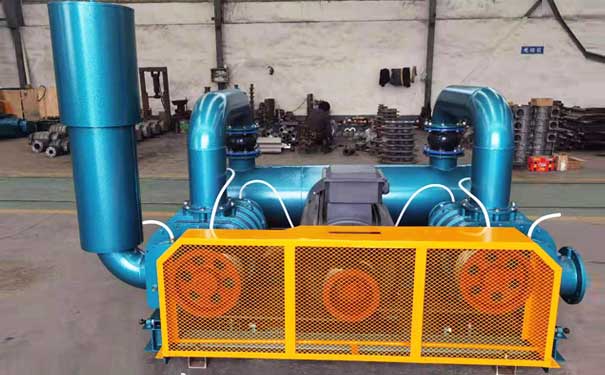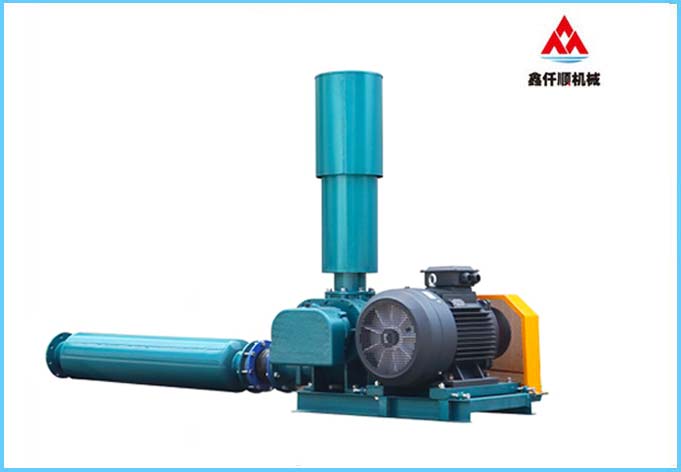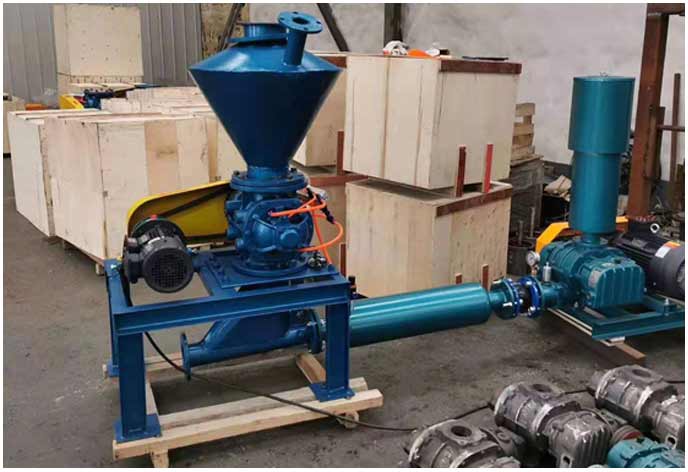Roots blowers are widely used in sewage treatment, aquaculture, pneumatic conveying, cement and chemical industry and many other different departments. In order to extend the service life of roots blowers, users should master some correct methods to use roots blowers. Specifically, the following aspects should be paid attention to when using Roots blower.
Do not exceed the rated pressure value of Roots blower, which can be measured by the assembled pressure gauge. The content of particles in the air delivered by Roots blower shall be as small as possible, and the maximum size of particles inhaled shall not exceed the minimum clearance of the cylinder. Under the rated load of Roots blower, the bearing temperature after stable operation shall not exceed 55 ℃, and the maximum surface temperature shall not exceed 95 ℃. In addition, the gear lubricating oil temperature of Roots blower generally does not exceed 65 ℃. The correct oil level for each oil filling should be in the middle of the gear mailbox indicator hole, and it should not be too full to avoid bringing lubricating oil into the cylinder and causing pool water pollution. It is also necessary to regularly change the lubricating oil for Roots blower. Generally speaking, the oil needs to be changed for the first time after 200 hours of operation at the first start. After that, the lubricating oil should be changed every 6 months. Before injecting new oil, the oil tank and gears should be cleaned with gasoline or neutral kerosene, and then refueled after being drained.
1. Replacement of lubricating oil. There are generally three management methods for oil change of blower:
① Change the oil on time, that is, according to the specified time cycle. For example, change the oil every 3 months or so. As soon as the deadline comes, replace all the oil regardless of its quality. This method is simple and conservative, so it will cause waste and increase operating costs.
② Change the oil according to the quality, that is, according to the performance of the lubricating oil. I. Once the oil quality index exceeds the allowable standard, no matter how long it is used
Law replacement. This method is economical, but it is difficult to judge accurately.
③ Change the oil on time and according to the quality, that is, refer to a certain oil change cycle, and change the oil according to the change of oil quality. For example, if there is less dust pollution, change the oil every six months or so, and if there is serious pollution, change the oil every three months or so. If the oil color becomes darker, turbid, and there are dirt deposits and solid particles, the oil change period should be further shortened.
1. Check whether the lubricating oil is oxidized and deteriorated. If it has been oxidized and deteriorated, it can be distinguished from the appearance. At this time, the color of the lubricating oil becomes black or deepened, and a hard adhesive film will form on the surface.
2. Check whether the lubricating oil is mixed with too many hard particles. During inspection, use your fingers to take a small amount of lubricating oil for rolling, which can be judged by feeling.
3. Different kinds of lubricating oil cannot be mixed, new oil and old oil cannot be mixed, so when replacing lubricating oil, the waste oil should be completely removed, and then filled with new oil.
4. The lubricating oil shall be filled properly. Too little filling will cause insufficient lubrication. Over filling, excessive mixing of lubricating oil and sharp temperature rise will cause oil separation, decomposition and leakage.
The roots blower has serious oil leakage during operation. The traditional method is to shut down for a long time to remove and replace the sealing gasket and deal with the joint surface. In order to achieve effective treatment during equipment operation, the traditional method cannot be achieved. Now there is a lubricant on the market that is an oil additive, which will not pollute or deteriorate the oil, and will solve the hidden trouble in production for enterprises without stopping the machine.
2. The identification of lubricating oil, no matter which method of oil change, is to ensure that the lubricating oil has its due performance. Therefore, the following simple methods can be used to identify the quality of lubricating oil.
① When lubricating oil is used, it will be oxidized and deteriorated due to the influence of air and other media. In order to judge the degree of oxidation deterioration, the sediment sludge at the bottom of the oil tank can be taken and put between the index finger and the thumb to rub against each other. If there is more oil sludge but poor adhesion, it means that the oxidation of oil is not too serious, but it is not clean and needs to be filtered. If there is much gum and strong adhesion, it indicates that the lubricating oil has deteriorated seriously and cannot be used any more.
② Mechanical impurities in lubricating oil, including foreign suspended solids or insoluble substances such as dust, sand and metal particles deposited in the oil, will damage the oil film and increase wear. When the impurity content reaches a certain concentration, the lubricating oil cannot be used any more. According to experience, if the color of the oil is still no obvious improvement after filtering after it turns black, it should be replaced.
③ Water will increase the corrosiveness of the oil and make the oil aging; It is easy to form bubbles and make the oil lose its lubricity. Therefore, the moisture content should be controlled. High quality lubricants should be free of moisture. In practical application, in the case of water cooling, due to the penetration of cooling water, the lubricating oil deteriorates and fails. In order to check whether there is water, clean and dry cotton yarn can be used without lubricating oil and ignited with fire. If there is water in the oil, there will be explosion or flash.
I believe that after reading the above contents, you should also know the correct use of Roots blower lubricating oil. I hope it will help you.
Text term label: Roots blower
Link to this article: //wuhanzhcs.com/html/news/n02/676.htm










